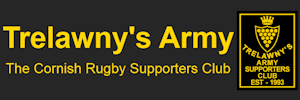By Tom Prout, former editor of the Trelawny’s Army Newsletter
Jonathan Trelawny (1650 – 1721) was one of the seven bishops imprisoned in the Tower of London by James II in 1688. Born at Pelynt into an old Cornish family, his father, the 2nd Baronet of Trelawne, was a supporter of the Royalist cause during the English Civil War.
Jonathan was ordained a priest in 1676, and in 1685 was appointed Bishop of Bristol.
In an age of religious intolerance, when Protestant England feared the might of her Catholic neighbours, the Catholic James II reversed the pragmatic policy of his predecessor, Charles II, by appointing Catholics to high office — for example, as Lord Lieutenant of Ireland and Chief Admiral of the navy. In 1687, James challenged the authority of the Church of England by setting out a Declaration of Indulgence towards Catholics; the following year, he instituted a second Declaration, this time directing it to be read in every church. Seven bishops, including Trelawny, presented the king with a petition against the reading. James reacted by imprisoning the bishops in the Tower.
Fearing a popular demonstration, James had the bishops transported by river to Traitors’ Gate in the royal barge. On the way, spectators waded into the river to receive the bishops’ blessing, and the Tower Warders knelt inside the gate as they landed. The guards that night drank a toast to their health.
In Cornwall, the news of the arrest of their Bishop was greeted with anger and dismay. “And shall Trelawny die?” asked the Cornish. But at this time there were no twenty thousand Cornishmen able to march on London to effect his release. The Cornish had given so much to the Royalist cause during the Civil War that they were exhausted. After overcoming the English at Stratton, the Cornish regiments had marched eastwards to capture Taunton, Bridgwater, and Bath. They had figured prominently in the taking of Bristol, but their losses had been severe, especially among their leaders. The Cornish Army’s loyalty had been to its leaders, and not to the English commanders who now exerted authority. The survivors of the Cornish regiments headed home. Although depleted in numbers, they yet managed to overcome Dorchester, Weymouth, Portland, Bideford, Barnstaple, Exeter, and Dartmouth. Almost single-handed, the Cornish had taken on the rest of the South West counties and won many famous battles. (Feats later to be emulated on the rugby field!)
On 30th June, 1688, the seven bishops were brought before the King’s Bench in Westminster Hall and charged with seditious libel. To cheers in Westminster Hall, and in the streets of London, they were acquitted. News of the acquittal produced scenes of great joy. In Bristol, the church bells rang out and fires were lit in many parts of the city. When the news reached Cornwall, the church bells of Pelynt rang and the mayor fired the two town cannons.
The imprisonment and acquittal of the seven bishops became an important milestone in English history. Soon afterwards, William of Orange, with the approval of the Church of England, took the throne. James II fled the country, never to return. Trelawny went on to become Bishop of Exeter, and then Bishop of Winchester.
When Trelawny was imprisoned in the Tower, the Cornish asked “the reason why”. These words are thought to be an echo of a much older popular ballad, possibly from the time of the “An Gof” rebellion of 1497.
In the nineteenth century, the poet R.S. Hawker, vicar of Morwenstow, published anonymously The Song of the Western Men, based on the imprisonment of Trelawny and the reaction in Cornwall. The poem was set to music. Trelawny, as it is now known, has become the Cornish national anthem.




